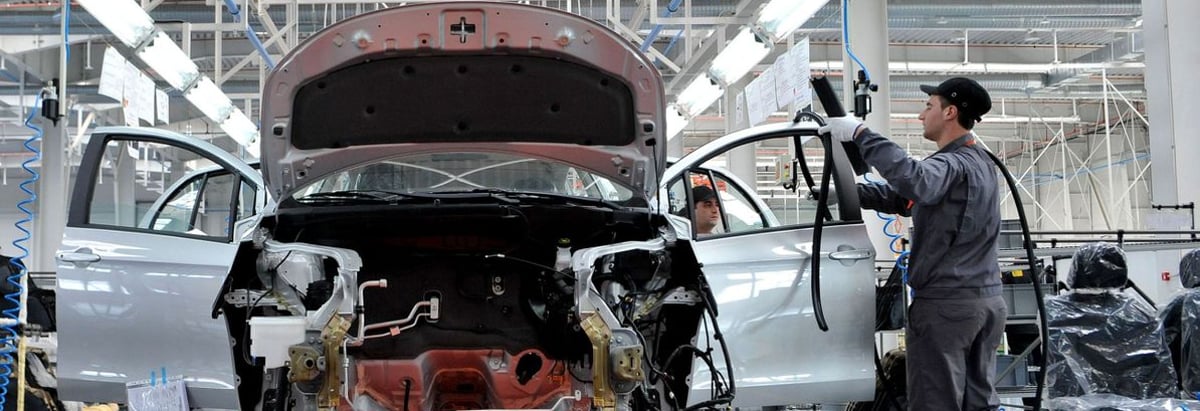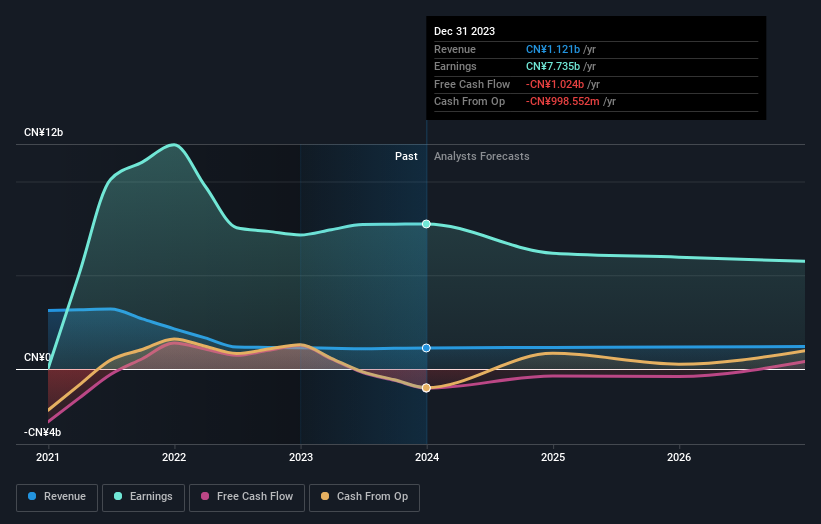Brilliance China Automotive Holdings Limited's (HKG:1114) market cap dropped HK$1.3b last week; Private companies bore the brunt

Key Insights
- Brilliance China Automotive Holdings' significant private companies ownership suggests that the key decisions are influenced by shareholders from the larger public
- 53% of the business is held by the top 4 shareholders
- Institutional ownership in Brilliance China Automotive Holdings is 25%
A look at the shareholders of Brilliance China Automotive Holdings Limited (HKG:1114) can tell us which group is most powerful. We can see that private companies own the lion's share in the company with 42% ownership. Put another way, the group faces the maximum upside potential (or downside risk).
As a result, private companies as a group endured the highest losses last week after market cap fell by HK$1.3b.
Let's take a closer look to see what the different types of shareholders can tell us about Brilliance China Automotive Holdings.
Check out our latest analysis for Brilliance China Automotive Holdings

What Does The Institutional Ownership Tell Us About Brilliance China Automotive Holdings?
Institutions typically measure themselves against a benchmark when reporting to their own investors, so they often become more enthusiastic about a stock once it's included in a major index. We would expect most companies to have some institutions on the register, especially if they are growing.
As you can see, institutional investors have a fair amount of stake in Brilliance China Automotive Holdings. This implies the analysts working for those institutions have looked at the stock and they like it. But just like anyone else, they could be wrong. It is not uncommon to see a big share price drop if two large institutional investors try to sell out of a stock at the same time. So it is worth checking the past earnings trajectory of Brilliance China Automotive Holdings, (below). Of course, keep in mind that there are other factors to consider, too.

We note that hedge funds don't have a meaningful investment in Brilliance China Automotive Holdings. Looking at our data, we can see that the largest shareholder is Shenyang Cairui Automobile Industry Development Partnership Enterprise (Limited Partnership) with 30% of shares outstanding. Liaoning Provincial Transportation Investment Group Co., Ltd. is the second largest shareholder owning 12% of common stock, and Baillie Gifford & Co. holds about 6.0% of the company stock.
To make our study more interesting, we found that the top 4 shareholders control more than half of the company which implies that this group has considerable sway over the company's decision-making.
While it makes sense to study institutional ownership data for a company, it also makes sense to study analyst sentiments to know which way the wind is blowing. Quite a few analysts cover the stock, so you could look into forecast growth quite easily.
Insider Ownership Of Brilliance China Automotive Holdings
While the precise definition of an insider can be subjective, almost everyone considers board members to be insiders. Company management run the business, but the CEO will answer to the board, even if he or she is a member of it.
I generally consider insider ownership to be a good thing. However, on some occasions it makes it more difficult for other shareholders to hold the board accountable for decisions.
Our most recent data indicates that insiders own less than 1% of Brilliance China Automotive Holdings Limited. But they may have an indirect interest through a corporate structure that we haven't picked up on. Keep in mind that it's a big company, and the insiders own HK$24m worth of shares. The absolute value might be more important than the proportional share. It is always good to see at least some insider ownership, but it might be worth checking if those insiders have been selling.
General Public Ownership
With a 33% ownership, the general public, mostly comprising of individual investors, have some degree of sway over Brilliance China Automotive Holdings. While this size of ownership may not be enough to sway a policy decision in their favour, they can still make a collective impact on company policies.
Private Company Ownership
Our data indicates that Private Companies hold 42%, of the company's shares. It might be worth looking deeper into this. If related parties, such as insiders, have an interest in one of these private companies, that should be disclosed in the annual report. Private companies may also have a strategic interest in the company.
Next Steps:
It's always worth thinking about the different groups who own shares in a company. But to understand Brilliance China Automotive Holdings better, we need to consider many other factors. Consider for instance, the ever-present spectre of investment risk. We've identified 3 warning signs with Brilliance China Automotive Holdings , and understanding them should be part of your investment process.
Ultimately the future is most important. You can access this free report on analyst forecasts for the company.
NB: Figures in this article are calculated using data from the last twelve months, which refer to the 12-month period ending on the last date of the month the financial statement is dated. This may not be consistent with full year annual report figures.
Valuation is complex, but we're here to simplify it.
Discover if Brilliance China Automotive Holdings might be undervalued or overvalued with our detailed analysis, featuring fair value estimates, potential risks, dividends, insider trades, and its financial condition.
Access Free AnalysisHave feedback on this article? Concerned about the content? Get in touch with us directly. Alternatively, email editorial-team (at) simplywallst.com.
This article by Simply Wall St is general in nature. We provide commentary based on historical data and analyst forecasts only using an unbiased methodology and our articles are not intended to be financial advice. It does not constitute a recommendation to buy or sell any stock, and does not take account of your objectives, or your financial situation. We aim to bring you long-term focused analysis driven by fundamental data. Note that our analysis may not factor in the latest price-sensitive company announcements or qualitative material. Simply Wall St has no position in any stocks mentioned.
About SEHK:1114
Brilliance China Automotive Holdings
An investment holding company, manufactures and sells BMW vehicles and automotive components in the People’s Republic of China and internationally.
Undervalued with adequate balance sheet.

